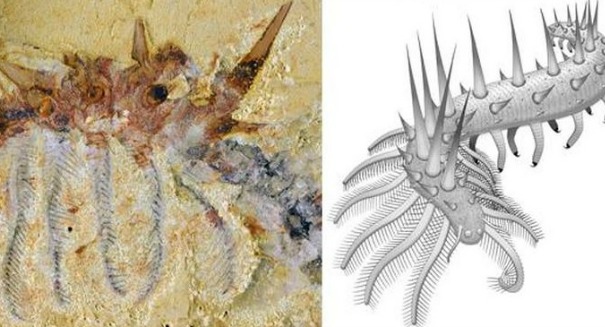
This crazy-looking creature was discovered in South China, and it's definitely not something you would want to make angry.
Worms don’t sound like very intimidating creatures, and certainly today’s versions aren’t about to inspire fear in anyone, but one worm that lived 500 million years ago was a very different story.
Scientists from Yunnan University in China and the University of Cambridge in England announced that they have discovered a worm-like animal that they are calling the Hairy Collins’ Monster, after the scientist who found a similar worm in Canada a few decades ago, according to a CNET report.
This worm is rather dangerous looking, with spikes sticking up along its back, and it is considered a lobopodian — also known as a legged worm that dates back to the Cambrian period.
This fossil had about 72 sharp spikes and six pairs of legs in the front with nine pairs of legs in the back.
The worm probably didn’t move around a whole lot and was probably targeted by predators, which is why it developed the sharp spikes so that it could move about safely on the ocean floor.
Unlike other fossils, this one is fairly well intact, allowing a nice, complete view of its spiked structure, and other details such as the digestive tract.
The modern velvet worm is likely a descendant of this terrifying looking creature.
Lobopodia is an informal group of worm-like creatures that have stubby legs. It mostly refers to Cambrian-era creatures with that have non-segmented limbs that are flexible, although some also have toughened claws or, in the case of this newest worm, spines.
Velvet worms are the most closely related species today. They are segmented organisms with small eyes and antenna, along with lots of legs and glands for producing slime.